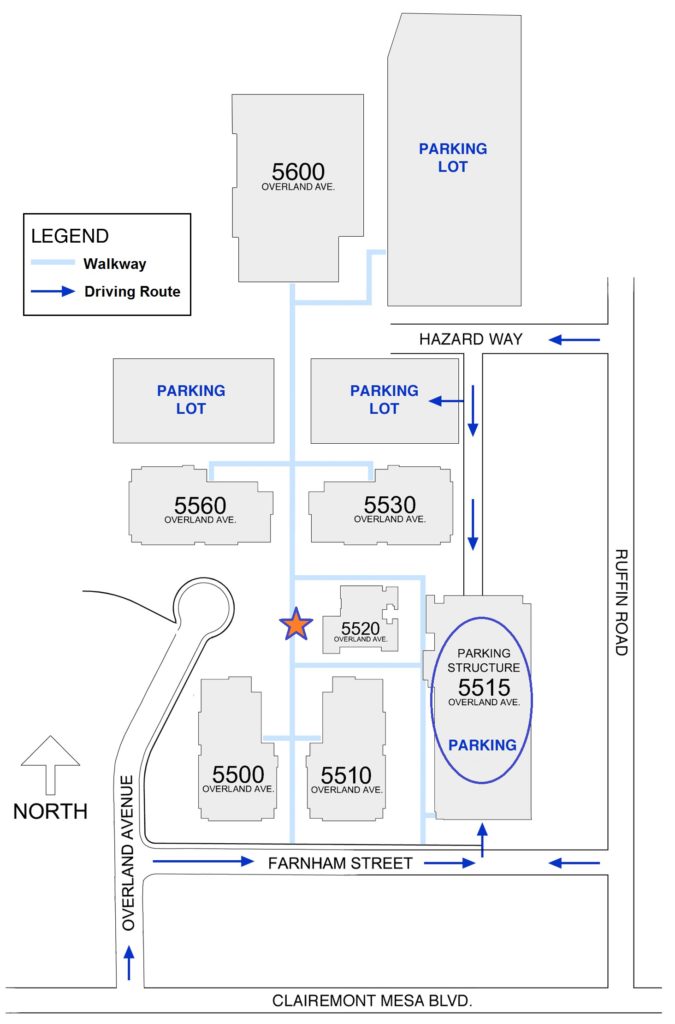September 2016
Honoring Yesterday – Protecting Tomorrow
Vol. 47, No. 9
What’s Inside
- President’s Message
- Recent Events
- The American Economy
- Coming Home to the COC
- 2016 Election Results
- Pension Facts
- Board Member Profile
- Walk to End Alzheimer’s
- Scholarship Announcement
- Testimony of President McTighe to BOR
- Bits and Pieces
- Public Pensions Protect Retirement Even for Employees Who Change Jobs
- Becoming a Living Organ Donor
- CECO Turns 60
- Health Fair Picnic
- Welcome New Members
- In Memoriam
September Calendar of Events
Mon., September 5
Labor Day
RESDC and SDCERA offices closed for holiday
Tues., September 6, 1:00pm
SDCERA Meet & Greet
SDCERA invites you to a Meet and Greet at 1:00 pm at Bonita-Sunnyside Community Library, 4375 Bonita Rd., Bonita, 91902. SDCERA leadership team will discuss recent activities and future initiatives. RSVP not necessary.
Thurs., September 8, 9:30am
RESDC Board of Directors Meeting
8825 Aero Drive, Suite 205
Thurs., September 15, 8:30am
SDCERA Board of Retirement Meeting
2275 Rio Bonito Way, Suite 200
![]() View the NETWORK
View the NETWORK
as a printable PDF
Are you on social media?
Stay connected with us!
![]()
![]()
![]()
Upcoming RESDC Events
Weds., October 5, 11:00am
Coming Home to the
County Operations Center
Click here for more details.
Weds., October 26
Health Fair Picnic
Click here for more details.
President’s Message
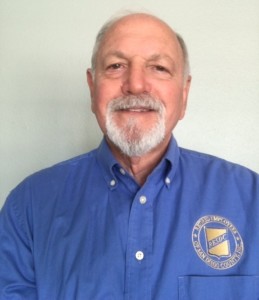
John McTighe, President
By John J. McTighe
I want to thank former CAO Walt Ekard for his inspirational remarks in last month’s Network. Given recent events and comments around this country and abroad, it is refreshing to hear from such a strong champion for public service and especially for the public servants who are dedicated to making the wheels of government turn.
In September, Tier A retirees are being hit with the sudden elimination of the Supplemental Benefit Allowance (SBA) payment. By way of background, the SBA is a taxable, non-vested benefit payment that has been received by Tier A retirees with ten or more years of service as a result of decisions made by the Board of Supervisors and the Board of Retirement (BOR) in 2007. Back then, the County agreed to fund reimbursements for healthcare coverage for Tier I & Tier II retirees up to $400 a month for those with 20 or more years of service. At the same time, the BOR established a policy to set aside “excess earnings” in a fund to pay a non-vested, taxable benefit to Tier A retirees on a sliding scale depending on the number of years of service. Under the policy, excess earnings were defined as the retirement system’s trust fund earnings in excess of the approved assumption rate (today 7.25%). If the funded ratio of the retirement system exceeded 90%, a portion of the excess earnings would be used at the discretion of the Board of Retirement. There were funds set aside a number of years ago by the BOR that were designated to pay the SBA. This payment was initially set at a maximum of $400 per month for Tier A retirees with 20 or more years of service. The payment was reduced to a maximum of $175 in 2013 as a way to extend the time the available SBA funds would be paid.
In July, without advance notice to RESDC, SDCERA staff filed a recommendation for BOR consideration to amend the Supplemental Benefit Allowance Policy to allow for either a prorated, partial payment or to suspend payment of the SBA when there would be insufficient funds to make a full payment. Their report for the July 21st BOR meeting stated that “Staff projections show that in November 2016 there will be insufficient funds to pay the full amount.” The options presented were to either 1.) pay the full amount in October and then a partial payment in November, or 2.) to pay the full amount in October and to either a.) retain the residual funds in the SBA reserve until they are sufficient to pay the benefit again or b.) transfer the residual funds from the SBA reserve to the Trust Fund. I urged the BOR (see testimony on page 6) to find a way that a Supplemental Benefit Allowance can be continued into the future. I further urged them to not allow funds set aside for the SBA to be used for any other purpose and that the residual should be held until additional funds are available so this benefit to Tier A retirees can be restored. The BOR chose to authorize a partial pro rata payout when insufficient funds are available to make a full payment.
On July 25th, SDCERA sent letters to all affected Tier A retirees informing them “The final full SBA payment will be included in your October 2016 benefit payment. After that payment, SDCERA will issue one subsequent prorated, partial payment to you.” Then, surprisingly, we were notified on August 5th that SDCERA staff had made an error in their calculations and the final full payment of the SBA will be made in August, not October, with any residual paid out before the end of the calendar year.
We have voiced our strong concerns with SDCERA staff and board members that the handling of the SBA situation has been unfortunate. The County Employees Retirement Law of 1937 requires that a recognized retired employees organization be given “reasonable advance notice of any proposed changes to the retirement benefits offered by the system or the use or uses of excess funds of the retirement system.” The organization is to be given reasonable opportunity to comment prior to any formal action by the board on the proposed changes. [Government Code Section 31592.5] I believe the exhausting of the SBA constitutes a change in benefits, even if it is a consequence of actions taken years ago. SDCERA staff did not give us reasonable advance notice so that we could discuss this issue with staff prior to their placing it on the BOR agenda.
Regardless of how we got here, the bottom line is that Tier A retirees will be receiving less benefits when the funds set aside for the SBA run out. RESDC will continue to urge the BOR and Board of Supervisors to find a way that the Supplemental Benefit Allowance can be reinstated in the future. Furthermore, RESDC will continue to advocate on behalf of all members for the continuation, protection and enhancement of all your rights and benefits.
Recent Events
- Board of Retirement elects Dianne Jacob as Chair. The Board of Retirement of the San Diego County Employees Retirement Association (SDCERA) voted unanimously in August to elect Trustee Dianne Jacob as Board Chair. SDCERA Trustees Mark Oemcke and Samantha Begovich were elected Vice Chair and Secretary, respectively.
- Supreme Court won’t re-hear Teachers Union dues case. In what is at least a temporary victory for teacher’s unions, the Supreme Court refused to reconsider a challenge by nine non-union California teachers of mandatory dues payments for their representation. In a six-word ruling, the divided court—which tied 4-4 and could not agree on a ruling in April after the death of Justice Antonin Scalia—said it would not re-hear the case. The April ruling effectively affirmed the ruling of the 9th U.S. Circuit court of Appeals and upheld the mandatory payments.
The American Economy:
A View from the Outside
By Stan Coombs, Director
“The American middle class is shrinking and struggling.” Judy Woodruff’s introduction to the June 22nd PBS Evening Newshour was attention grabbing.
Woodruff introduced her guest, Christine Lagarde, Managing Director of the International Monetary Fund (IMF), and asked Lagarde to explain a recent IMF report that claims our seven-year economic recovery is slowing, and our pronounced income equality divide could worsen.
What is the IMF and why are they critiquing the American economy?
The IMF was conceived at the July 1944 United Nations Conference, and commenced operations the next year with 45 member countries, now 189. Its primary purpose was “to ensure the stability of the international monetary system – the system of exchange rates and international payments that enable countries and their citizens to transact with each other.”
Member countries contribute to the IMF fund through quotas, from which they may borrow when they can’t meet financial obligations. Borrowers must provide collateral and enact economic reforms necessary “to protect the international economy” (think Greece). In March 2016, member quotas totaled about $650 billion.
IMF staff makes regular monitoring visits to member countries, including the U.S., and describes their findings in concluding statements, which are published. It’s important to monitor economic circumstances within participating countries.
The IMF has often eased international financial crises, but hasn’t escaped controversy. Critics argue that it increases inequality and environmental destruction, by requiring countries to spend less on health and education, eliminating food and transportation subsidies, privatizing national assets, and freezing wages.
Lagarde pulled no punches. “We are seeing a shrinking of the middle class (in the U.S.). In 1975…it was roughly 60% of the total population. . .today it’s about 50%,” its smallest size in 30 years.
The middle class is arguably the driver of the U.S. economy. According to Lagarde, upper class members don’t spend a large percentage of their income and the lower class doesn’t have much to spend. Maximum consumption comes from the middle class. Apparently, we need our consuming middle class to be at full strength.
The Bureau of Economic Analysis seems to agree, reporting that U.S. personal consumption ranged from over 65% of total gross domestic product in 1945 to 68% in 2015.
Entitled, “Article IV Consultation With The United States of America: Concluding Statement of the IMF Mission,” the IMF report notes that the U.S. economy is good. . .resilient in the face of financial market volatility. . .unemployment is down to 4.7%. . .inflation is contained.
But, the report also says there are significant longer-term challenges, and “concerted policy actions are warranted sooner rather than later.” Strong language for an organization that trades in diplomacy. The report points to falling U.S. labor force participation, lots of folks retiring or bowing out of the work force, increased polarization of income, with profits not shared reasonably across the population, and weak production. Growth in average U.S. productivity is down from about 1.5% in 2000 to under 0.3% in 2010-2015.
The report continues. Reduced dynamism in the corporate sector could reduce innovation, deepen the loss of middle-income jobs, and further polarize (worsen) income distribution. Income polarization, in turn, could prevent productivity-improving spending on education by poorer households, lessen social mobility, and add to income insecurity and (here we go again) limit consumption.
The energy sector is contracting, says the report, and the non-energy sector, non-residential investments, and net exports are weak. Consumer demand has slowed, basic infrastructure is crumbling, and labor markets and businesses appear less adept at reallocating human and physical capital (to priority needs).
There’s also an “urgent need” to tackle poverty, says the IMF. Poverty has risen. One in seven Americans (14%) are in poverty, and one in five of those in poverty (20%) are children and one in three (33%) are women. That’s about 46 million folks, 9 million folks, and 15 million folks, respectively. About 40% of those in poverty, or 18 million, are actually employed!
The IMF suggests eight public policy changes: increase infrastructure investment, adopt skills-based immigration reform, expand the earned income tax credit and federal minimum wage, improve paid family leave and childcare assistance, increase funding for training programs, reform the corporate income tax, and ratify the Trans Pacific Agreement, and an investment treaty with Europe.
The report didn’t address our deadlocked political system. Those so inclined can read the entire report on the IMF website.
San Diego County retirement fund net assets decreased $12.7 million during May, bringing fiscal-year-to-date changes to -$95.8 million, and total net assets to $10.2 billion. However there’s the hint of better news. Preliminary reports say 2015-16 ultimately ended up with slightly positive, 0.5% earnings. More on that to come.
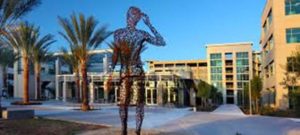 Attention RESDC Members: You’re Invited!
Attention RESDC Members: You’re Invited!
Coming Home to the County Operations Center
Wednesday, October 5, 2016
11:00am – 2:00pm
County Operations Center
5520 Overland Avenue, San Diego, 92123
The “Coming Home to the County Operations Center” event invites retired employees of San Diego County to come “back home” to celebrate the County of San Diego Operations Center (COC).
The vision for the COC is to create a campus that capitalizes on Kearny Mesa’s central geographic location to provide easily accessible government services for the public. The physical campus demonstrates the County’s commitment to a sustainable and well-designed government campus that provides long term value to the many users of the campus.
Program Highlights
- Reception including light hors d’oeuvres and refreshments
- Keynote Speech by Don Steuer, Chief Operating Officer, County of San Diego
- Resource booths hosted by RESDC, San Diego County Credit Union, SDCERA, County of San Diego Employee Resource Groups, Aging & Independence Services, Registrar of Voters, County Employee’s Charitable Organization, and Live Well San Diego
- Guided Tours of the COC Art Collection
Planning to attend? Visit www.resdc.net/resdc-events or call (619) 688-9229 to RSVP.
From the North or South
From 163, exit onto Clairemont Mesa Blvd. Eastbound, turn Left (North) onto Overland Ave.
From I-15, exit onto Clairemont Mesa Blvd. Westbound, Turn Right (North) onto Overland Ave.
*All: To access parking structure from Overland, turn right onto Farnham St. Parking structure is on the left.
From the East or West
From 52, exit onto Ruffin Rd. Southbound. Turn right (North) onto Hazard Way, turn left into parking structure.
Or
Turn Right (West) onto Farnham St. Turn Right into parking structure.
 2016 Election Results Announcement
2016 Election Results Announcement
By Carlos Gonzalez, Elections Committee Chair
As required in the Bylaws, a request for nominations for First Vice President, Treasurer, Secretary, and four Board members was published in our July and August newsletters. The positions of First Vice President, Treasurer, and Secretary require the nominees be a present or past Board member. Nominations were officially closed on August 5th. Our current First Vice President, as well as the current Treasurer and Secretary are available to remain for another two-year term each. The four Directors up for reelection are also available to serve another two-year term.
In accordance with Article XI, Section 2 of the RESDC Bylaws, “When only one candidate for a vacancy on the Board of Directors is nominated, that nominated candidate will be considered elected by the Board.” Accordingly, Stan Coombs will be elected to the position of First Vice President, and Frank Bittner will be elected to the position of Treasurer. Joan Wright will be elected to the Secretary position.
The four Directors reelected to new two year terms are Chuck Brown, Carlos Gonzales, Nellie Parks, and Janel Pehau.
The Retired Employees of San Diego County Association and all its members, greatly appreciated our volunteer members, and their service as Officers and Directors of our Association.
Pension Facts
Pension Facts at a Glance
17,646
Total SDCERA retired members as of June 28, 2016.
General: 14,740
Safety: 2,906
State Retiree Health Benefits
An Ongoing Challenge
By Chris Heiserman, Director
Since our retiree health benefits are front and center now with the exhaustion of the Supplemental Benefit Allowance (SBA) for Tier A, it seems like a good time to remind ourselves of the state’s ongoing struggle to pay down its huge tab for future promised retiree health benefits. Because our health benefits are fairly straightforward – many Tier A retirees have for several years received a supplemental allowance to offset a small portion of our chosen health plan’s cost – it seems impossible that the State of California is looking at more than $74 billion in unfunded future health benefit expense.
Unlike pensions, which are prefunded with contributions from employees and the state, allowing investment returns to significantly reduce future liabilities, state retiree health benefits have been funded on a pay-as-you-go basis. By covering only the current health care tab every year, the growing obligation for future benefits is essentially passed on to the next generation. As more Baby Boomers retire, the cost of retiree health simply gets larger.
According to State Controller, Betty Yee, retiree health care costs have increased dramatically over the past 15 years, accounting for 0.6% of the General Fund budget in 2001 and 1.6% this year ($1.9 billion). She estimated that the amount to fully fund existing and future benefits this year would have been more than $5 billion. The State Controller’s Office has tracked and reported for nine years on the escalating unfunded liability associated with the cost of providing health and dental benefits to state retirees. Former Controller John Chiang sounded the alarm on this growing problem eight times in annual reports, while the unfunded price tag grew from $47.8 billion in 2007 to $71.8 billion in 2014. Current Controller Yee reported in January this year that the present day cost of those benefits earned by June 30, 2015 is now $74.1 billion.
Governor Jerry Brown started addressing this fiscal challenge in his 2015-16 Budget. Brown said paying down the huge unfunded liability for retiree health care will take decades and should be an equally shared responsibility between employers and employees. His Administration is asking labor bargaining units to agree to make contributions to retiree health costs as contracts come up for renewal. Three state bargaining units, including the California Highway Patrol, have already signed on to this approach and this will undoubtedly be the path forward in beginning to reverse this growing fiscal dilemma.
Controller Yee said that even incremental steps to begin pre-funding the benefits would meaningfully reduce the state’s liability. Pre-funding just 10 percent of the cost over the pay-as-you-go expenses ($1.9 billion) would increase current annual costs by $250 million but reduce the total unfunded liability over time by $3.29 billion. She said Governor Brown proposes pre-funding the whole retiree health benefit liability by Fiscal Year 2044-45, with projected savings to the state of more than $240 billion.
That’s a 30-year plan to solve one of the state’s biggest budget problems. We aren’t likely to be around to see if they succeed, but let’s wish them luck.
Board Member Profile
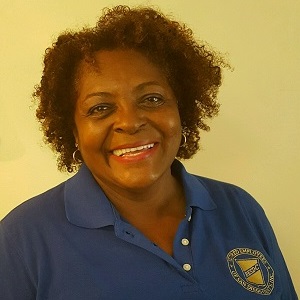 Nellie Parks — A member of the RESDC Board since December 2015, Nellie retired from the San Diego Superior Court in 2006 with 20 years of County service. During her career at the Court she worked as courtroom operations supervisor, as well as shift supervisor for day and swing shifts while assigned to Traffic Court.
Nellie Parks — A member of the RESDC Board since December 2015, Nellie retired from the San Diego Superior Court in 2006 with 20 years of County service. During her career at the Court she worked as courtroom operations supervisor, as well as shift supervisor for day and swing shifts while assigned to Traffic Court.
Nellie believes in continuing education and has completed courses in sign language, along with SDSU Osher Lifelong Learning Institute courses and Adult Education classes in line dancing, crochet and sewing.
She is an avid volunteer. In addition to her service on the RESDC Board, she previously helped with Burn Institute events, Meals on Wheels, and Girl Scout programs in San Diego, and has enjoyed the responsibility as a poll worker with the County Registrar of Voters.
Nellie’s hobbies include reading mystery, true crime and political novels; and classes with the YMCA in Step Aerobics and Cardio. Her favorite travel experience was a Royal Caribbean cruise that visited Vancouver, Victoria, British Columbia, and the Strait of Georgia. She also enjoyed fabulous sight-seeing on a driving road trip from Chicago to California. More cruising is in her foreseeable future.
She enjoys spending time with her two children, five grandchildren, and one great grandchild.
 Walk4ALZ San Diego 2016
Walk4ALZ San Diego 2016
Join Team RESDC!
Why I am Supporting the Walk4ALZ 2016
By Nellie Parks, Director
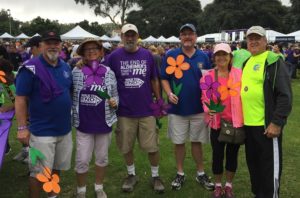
Last year’s RESDC team at the Walk to End Alzheimer’s.
Staff at the Mayo clinic has stated that “Alzheimer’s disease is a progressive disease that destroys memory and other important mental functions.” This statement impacts me, as a tiny sliver of apprehension has overcome me each time I can’t immediately recall where I placed my car keys or eyeglasses. I have read that after you reach age 65 the risk factor for Alzheimer’s increases greatly. I am in that category. Subsequently, I have started to ask myself, “is this just a normal, occasional memory lapse, or is this the onset of Alzheimer’s disease?”
For as long as I can remember, I have been an independent, responsible person. I have taken care of family and I love to volunteer. It is difficult to think that I may one day have to give up independence, living alone, coming and going as I please, or have to rely on family members to care for me. Although my family would provide loving care for me, I don’t want to interrupt their daily routine.
The fact that so many receive a diagnosis of Alzheimer’s reinforces my desire to assist Alzheimer’s San Diego. I believe that research studies will one day find a treatment and cure for Alzheimer’s. I am elated to show support by participating in Walk4ALZ on October 15, 2016 in beautiful Balboa Park. Donations raised at this great event will go towards clinical trials, medications, education, and other support programs. The Walk is approximately 2.75 miles long.
As a participant in the Alzheimer’s San Diego Walk4ALZ, I am showing my support for the more than 60,000 San Diegans living with Alzheimer’s. But I need your support! Please join me in the fight against San Diego’s third leading cause of death by walking with me.
It’s so easy to register! Visit my Walk4ALZ page and join RESDC’s team. If you cannot join me on Walk day, please consider making a tax-deductible donation to my page to provide San Diego families with support, information and resources, while advancing critical local research for a cure.
Thank you for joining me!
Nellie Parks – Team RESDC Captain
Registration is easy; simply visit the Team RESDC Walk4ALZ 2016 participant page at https://www.resdc.net/Walk4ALZ and join my team.
If you’re unable to participate, please consider making a $35 donation to my fundraising campaign. Every dollar advances the care, support and research efforts of the Alzheimer’s Association.
 Scholarship Announcement
Scholarship Announcement
New Community Service Award
Steve Blocker was a retired military enlistee who volunteered with the County Probation Department for nearly 20 years and was recognized as the Volunteer of the Year for Probation Department and San Diego County Board of Supervisors several times during his tenure. His efforts with at risk juveniles was of great esteem and if it were not for disabilities incurred during his military service, he would have obtained full employment with the Probation Department. Steve passed away a couple months ago.
RESDC members and dear friends of Mr. Blocker, have resolved to create a Community Service College Scholarship Fund in his memory for family members of RESDC members. This $250 award named “The Steve Blocker Volunteer Scholarship” will be awarded to a student with admirable history of community service endeavors. Watch for further details in the January 2017 NETWORK.
San Diego County Credit Union

Identity theft is one of the fastest growing crimes in the United States. There are steps you can take to minimize your risk of identity theft including: destroying unused checks and credit cards, taking extra security with online purchases, being aware of phone scams, and simply guarding your purse or wallet. Be sure you do not give out your personal information over the phone unless you are sure you know to whom you’re speaking. SDCCU® also encourages you to review your credit report at least once a year for free at: www.annualcreditreport.com.
Testimony of John McTighe, President of Retired Employees of San Diego County, Inc. Regarding Supplemental Benefit Allowance
July 21, 2016
Chairperson and Trustees, I am John McTighe, President of the 6,500 member strong Retired Employees of San Diego County (RESDC). I’d like to share our comments and suggestions regarding the Supplemental Benefit Allowance (SBA) item on your agenda today.
RESDC was at the forefront of the discussions that took place nearly ten years ago which resulted in the conversion of what had been a non-taxable health care reimbursement into a taxable SBA provided to all Tier A retirees. Without rehashing the sometimes tense discussions that took place back then, I think it is important to note that we have continued to advocate on behalf of retirees for some form of healthcare reimbursement, whether it was called that or not.
Although the health insurance market has changed substantially since 2007 when the decision was made to establish the SBA, it is simply not possible for retirees to live without some form of healthcare coverage today. Even the diminished $175 a month SBA has been a needed lifeline for some of our retirees who have seen the expense of healthcare coverage balloon since 2007. So it is with a great deal of concern that we observe that SDCERA has reached the point of no longer being capable of funding the SBA to the roughly 8,500 Tier A retirees who now receive it. The real impact on those retirees with small pensions will be hard. I urge your Board to find a way that a Supplemental Benefit Allowance can be continued into the future.
Secondly, I urge you to not allow funds set aside for the SBA for members to be used in any other way. We believe you should bank the remaining SBA dollars until additional funds are available and this very important benefit to Tier A retirees can be restored.
Although the likelihood of the retirement fund exceeding the 90% funding threshold needed to allow for additional funds to be set aside for the SBA seems unreachable in the near future, we want to make sure that when that happens in the long run there will be a base of funds upon which to begin building back funding for this important benefit.
That concludes my remarks. I will be pleased to answer any questions.
John J. McTighe
President
Bits and Pieces
Hila Page retired from Health Services in 2006. She celebrated her 84th birthday in July!
Nellie Parks enjoyed an afternoon performance in June, by the California Note Catchers, a women’s a capella four part harmony barbershop chorus. Songs such as “Dream a Little Dream” brought back memories of a time gone by! She can’t wait for their Holiday Harmonies concert in December which will be held at the Paradise Village Liberty Theater.
Sarah Mumford retired from the county after 21 years of service. She worked for Revenue and Recovery. She turned 87 years old in August! Sarah moved to Weirton, West Virginia after she retired.
Charles (Chinch) Cianciola retired in 2007 from the Descanso Sheriff’s Office. Shortly after retiring, Chinch and his wife, Sharon, moved back to Ashland, Ohio, near where they grew up. Last year they celebrated their 50th wedding anniversary! They traveled to France with his siblings, a total of four couples, and took a river cruise up and down the Seine River. It was a wonderful experience.
John Walker and his wife, Eileen, celebrated their 50th wedding anniversary in August! John retired from the Sheriff’s Department in the 90s. He had been with the County for eleven years. After retiring, John and Eileen moved to Bend, Oregon. They enjoyed traveling to Alaska and spent three weeks in Hawaii for their anniversary celebration.
Dave Guerrieri retired in 2001. He and his wife celebrated their 50th wedding anniversary in August! There were lots of landmark anniversaries in his family this year including his parents’ 70th anniversary. They had a big family reunion in June to celebrate all of the anniversaries. It was a long day with a barbecue, games, and a catered dinner. They had a wonderful time.
Marilyn Chisholm recently celebrated her 94th birthday! She retired from Edgemoor Hospital in the late 60s where she had been a Recreation Therapist.
Public Pensions Protect Retirement Even for Employees Who Change Jobs
A new report finds that nearly all state retirement systems have features that allow for preservation of retirement income benefits even for employees who change jobs.
‘Preserving Retirement Income for Public Sector Employees’, available at http://www.nirsonline.org/, finds that almost all public retirement systems offer Defined Benefit pensions that provide a modest, but stable retirement income that lasts through retirement. The research also finds that nearly all state retirement systems have features that allow for preservation of retirement income benefits even for employees who change jobs via the purchase of service credits, interest credits on withdrawn contributions, and re-depositing of employee contributions.
Become a Living Organ Donor
By Mary Robinson, RESDC Member
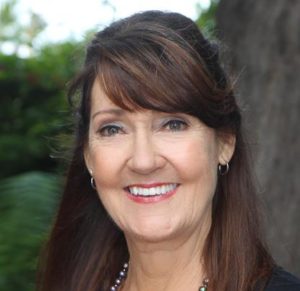 In July a San Diego Union-Tribune article caught my eye with the headline “Folsom Officer Donates Kidney to Sheriff’s Deputy.” The story describes how Folsom Police Sergeant Eric Baade came across a Facebook post by a fellow law enforcement officer’s wife. Her post explained that her husband, Sacramento County Sheriff’s Deputy Nate Wise, needed a kidney transplant and Sgt. Baade sprang into action. You see, Baade’s own wife had received a kidney in 2008 and over the past several years he knew he wanted to return the favor. And so he did. On June 27, Sgt. Baade underwent surgery to give the gift of life to Deputy Wise and the two men are now “brothers.”
In July a San Diego Union-Tribune article caught my eye with the headline “Folsom Officer Donates Kidney to Sheriff’s Deputy.” The story describes how Folsom Police Sergeant Eric Baade came across a Facebook post by a fellow law enforcement officer’s wife. Her post explained that her husband, Sacramento County Sheriff’s Deputy Nate Wise, needed a kidney transplant and Sgt. Baade sprang into action. You see, Baade’s own wife had received a kidney in 2008 and over the past several years he knew he wanted to return the favor. And so he did. On June 27, Sgt. Baade underwent surgery to give the gift of life to Deputy Wise and the two men are now “brothers.”
As a volunteer with San Diego’s John Brockington Foundation and a member of WILD (Women in Living Donation), it dawned on me that our retired County workers are cut from the same cloth as Sgt. Baade. We have spent our careers serving the public, working to improve our communities and enriching peoples’ lives. We’ve built community centers, health clinics, and recreation centers. We’ve tested the safety of our ocean waters and restaurant kitchens. We’ve patrolled the streets, investigated murders, analyzed critical evidence, and secured our courts. Serving people is in our blood.
Just a year ago, I donated my left kidney to a woman in Texas. Originally I had planned to help my neighbor who had been on dialysis for Type I diabetes for seven years. Sadly, she died before we could schedule the surgery; however, since I had already been approved as a donor, I decided to go ahead as an altruistic donor. My name and medical information were entered into the National Kidney Registry and I was matched to Clementine, an assistant college professor and the mother of four young children. She also was a refugee from the Rwanda genocide in 1994 and now, after receiving my kidney, she says, “God saved me twice.” And if that isn’t wonderful enough, my donation triggered a chain of kidney surgeries, resulting in eight people receiving the gift of life.
So, I ask you, for those of us healthy enough to travel, play golf, and explore new horizons, maybe we could explore what it means to be a living kidney donor. You may wonder, do I have to be a certain age? A certain blood type? What is the recovery like, and will I have to restrict my diet after I donate? (My favorite comment regarding diet was this: “Wine tastes twice as good with one kidney.”)
If Sgt. Baade’s story touched your heart or if you would like to learn more about living donation, contact one of these local transplant centers:
Rady Children’s Hospital Transplant Center – (858) 966-8066
Scripps Organ Transplant – (858) 554-431
Sharp Memorial Hospital Kidney-Pancreas Transplant Center – (858) 650-5000 or visit: sharp.com/memorial
UC San Diego Health — (858) 657-7729 or visit ucsdlivingdonor.org
For non-medical questions or if you would just like to talk about what it feels like to donate a kidney, you’re welcome to email me at mrrbaja@att.net. Together we can save lives by finding out what it means to be a living kidney donor. We were given two kidneys…one to keep and a spare to share!
Mary Robinson retired from the County Administration Office in 2002 and also worked in public information for the Sheriff’s Department, Department of Environmental Health, Department of Information Services and Housing and Community Development.
Editor’s Note: We’d like to publish other interesting stories like this about our members. Please contact the RESDC office if you have a compelling story for our newsletter. resdc@resdc.net or (619) 688-9229.
 CECO Turns 60
CECO Turns 60
Recognizes Retiree Vickie Velasco
The San Diego County Employees’ Charitable Organization (CECO) kicked off its milestone 60th anniversary at their annual awards breakfast in March. CECO awarded $170,000 to 69 non-profit local programs supporting the diverse needs and communities of our region. Grant awardees included: Family Health Centers of San Diego, Interfaith Shelter Network of San Diego, Just in Time for Foster Youth, Meals-on-Wheels Greater San Diego, and LightBridge Hospice Community Foundation. For more information on grant recipients, visit www.sdceco.org.
County of San Diego retiree, Vickie Velasco, was awarded the CECO President’s Award for her contributions to CECO during her tenure as its president. Vickie played an integral role in shaping CECO, an employee/retiree managed organization that has distributed more than $6.7 million to the local community! As a retiree, Vickie continues to be a proud contributor to CECO.
A big thank you goes out to all the retirees who have donated to CECO over the last 60 years. By lending a hand together, County employees and retirees have continued to make a positive impact in San Diego, making it a better place for its residents. For more information about giving to CECO, visit: http://www.sdcera.org/PDF/CECO_deduction.pdf. Stay connected with upcoming events at www.facebook.com/sdceco56.
 Annual Health Fair Picnic
Annual Health Fair Picnic
Sponsored by: Ameritas Dental, CIGNA Dental, Health Net, Kaiser Permanente, Pacific Group Agencies, Inc., San Diego County Credit Union, United HealthCare, and My Senior Health Plan
Date: Wednesday, October 26, 2016, 10 am – 1 pm
Location: Admiral Baker Field. Driving directions will appear in the October issue of the NETWORK.
All members, spouses and/or guests are requested to pay $5.00 each. The member’s picnic fee will be refunded/returned at the registration desk upon checking in, thus making the member attending the picnic free of charge.
The menu is barbecued beef, green beans, baked beans, fruit, coleslaw, rolls, beverages, and dessert. Lunch is served from 11:30 am – 12:30 pm.
To make reservations for the picnic, please print and complete the reservation form (click to open PDF form), indicating the names of those attending and include payment for each attendee. Make your check payable to RESDC, enclose it with reservation form and mail to RESDC, 8825 Aero Drive, Suite 205, San Diego, CA 92123. Reservation forms and payment must be received in the RESDC office by Friday, October 21. Badge and opportunity drawing ticket packets should be picked up at the registration table at the picnic. They will not be mailed. Cancellations must be received in the RESDC office by October 21. No refunds can be made after that date.
Welcome New Members
Lynn Susan Amabile – Child Welfare
Lorna Bautista – Treasurer/Tax Collector
Marjorie Bettencourt – Air Pollution Control
Anne Cordon – Health & Human Services
Ruben Gama – District Attorney
Juliet T. Glazier
Eugenia Hays – Superior Court
Gary Hollomon
James D. Lamp – Sheriff
Teresita F. Punzalan – Sheriff
Pamela E. Raptis – Environmental Health
Digna C. Sarmiento
Janet L. Seawell – Mental Health
Bruce E. Silva – District Attorney
Frances Sjoberg – Environmental Health
Eileen R. Storey
Craig E. Stover – Probation
In Memoriam
 Dolores Shoemaker
Dolores Shoemaker
We’re very sad to report the passing of Dolores Shoemaker, longtime RESDC volunteer, and wife of Director and former RESDC President George Shoemaker. You may remember Dolores helping at our lunches and picnics. She was always happy to offer her services in any way needed. She especially liked to help at the registration tables at our events.
The passion of Dolores’ life was the Pacific Beach Presbyterian Church Sunday Night Ministry, where she served hot meals to the homeless for over 28 years. She also created a network of churches so that someone without a home can get a hot meal every night of the week. She and George distributed food throughout the church network. Dolores was happiest when serving others. She will be missed.
In Memoriam
Abdulahi Aidid – Health & Human Services
Sue Bezer – Public Works
Margo Bower – Probation
Donald Burris – Probation
Betty Champlin – Marshal
Frances Coburn – Health & Human Services
Rober Covalt* – Parks & Recreation
Mary Covell – Surviving Spouse
Percell Downes* – Probation
Timothy Drum* – District Attorney
Maxine Ellison – Surviving Spouse
Gayle Graham – Planning & Land Use
Bernetta Hawbaker – Surviving Spouse
Mary Hobson – Library
Keith Howard – Parks & Recreation
Gerald Johnson – Facilities Management
Barbara Johnston – Surviving Spouse
Michael Long – SDCERA
John Martin – Health & Human Services
Kenneth Martin – Sheriff
Ngoc Pham – Health & Human Services
Alice Ritter – Library
Peter Shearer – Health & Human Services
Teresa Shirley – Health & Human Services
Raymond Tatum – District Attorney
Celeste Usler – Animal Control
Elaine Weiler – Superior Court
Virginia Welch – Surviving Spouse
*Active
As long as we think of you,
You’ll always be with us.
The surviving spouse of a member is eligible for RESDC membership. For enrollment assistance, call (619) 688-9229.
Member Privacy
Any retiree or surviving spouse who does not want his/her death notice published in the “In Memoriam” section of this newsletter may notify the RESDC office and your privacy will be maintained.
NETWORK is the official monthly newsletter of the Retired Employees of San Diego County, Inc. (RESDC), a private non-profit organization.
The information printed in the NETWORK is believed to be from reliable sources. However, no responsibility is assumed by the NETWORK for inaccuracies contained herein.
Business and Inquiries: Business matters and address changes may be recorded on our voicemail at any time, call (866) 688-9229. Please spell your name so the correct member record can be located.
Retired Employees of San Diego County, Inc.
8825 Aero Drive, Suite 205 | San Diego, CA 92123
Office Hours: 9 a.m. to 2 p.m. Monday through Friday
TELEPHONE: (866) 688-9229 Toll Free
FAX: (619) 688-0766
E-MAIL: resdc@resdc.net


